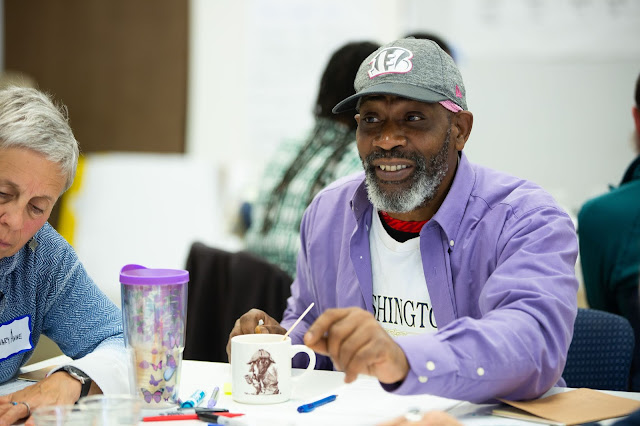Using Photos to Understand Our Neighbors
The Madisonville Community Studio is an ongoing project co-created by Madisonville residents and Design Impact (DI) to explore key questions about the inclusiveness of neighborhood changes. The project is supported by the Kresge Foundation.
During the first community studio, we invited participants to become researchers through a Participatory Action Research (PAR) method known as Photovoice.
Photovoice is a visual and qualitative research method used for community-based participatory research to document and reflect reality.
Between studio sessions, we asked studio participants to take a photo in response to three different responses. The photos didn’t have to be polished or professional; they just had to be authentic and true to each person’s experience.
Photovoice prompts:
- Take a photo that represents a part of Madisonville’s history that is important to you
- Take a photo that represents the Madisonville of today
- Take a photo that represents the Madisonville of the future
Sharing Our Photos
When we reconvened for the second studio, participants shared their photos during a gallery walk. This gave everyone an opportunity to view their neighbors' photos and reflect on the images. Each participant was given stickers to place near the images that resonated with them.
 |
Residents add comments and dots to the photos that resonated with them. |
 |
Ruth — Madisonville "saint" and historian
|
 |
| Residents' photos representing Madisonville's past, present, and future |
 |
Residents' photos representing Madisonville's past, present, and future
|
 |
Residents add comments and dots to the photos that resonated with them. |
During the conversations, they discussed things they noticed in the images: commonalities, themes, and thoughts or emotions that came up while looking at the images. We found that many photos that participants captured had to do with the new development occurring in the neighborhood.
Because it was only the second studio and relationships were still developing, studio participants did not dig as deeply in their conversations as we hoped. We recognized that we were still only scratching the surface.
Written by Desiré Bennett, Senior Social Equity Specialist at Design Impact


